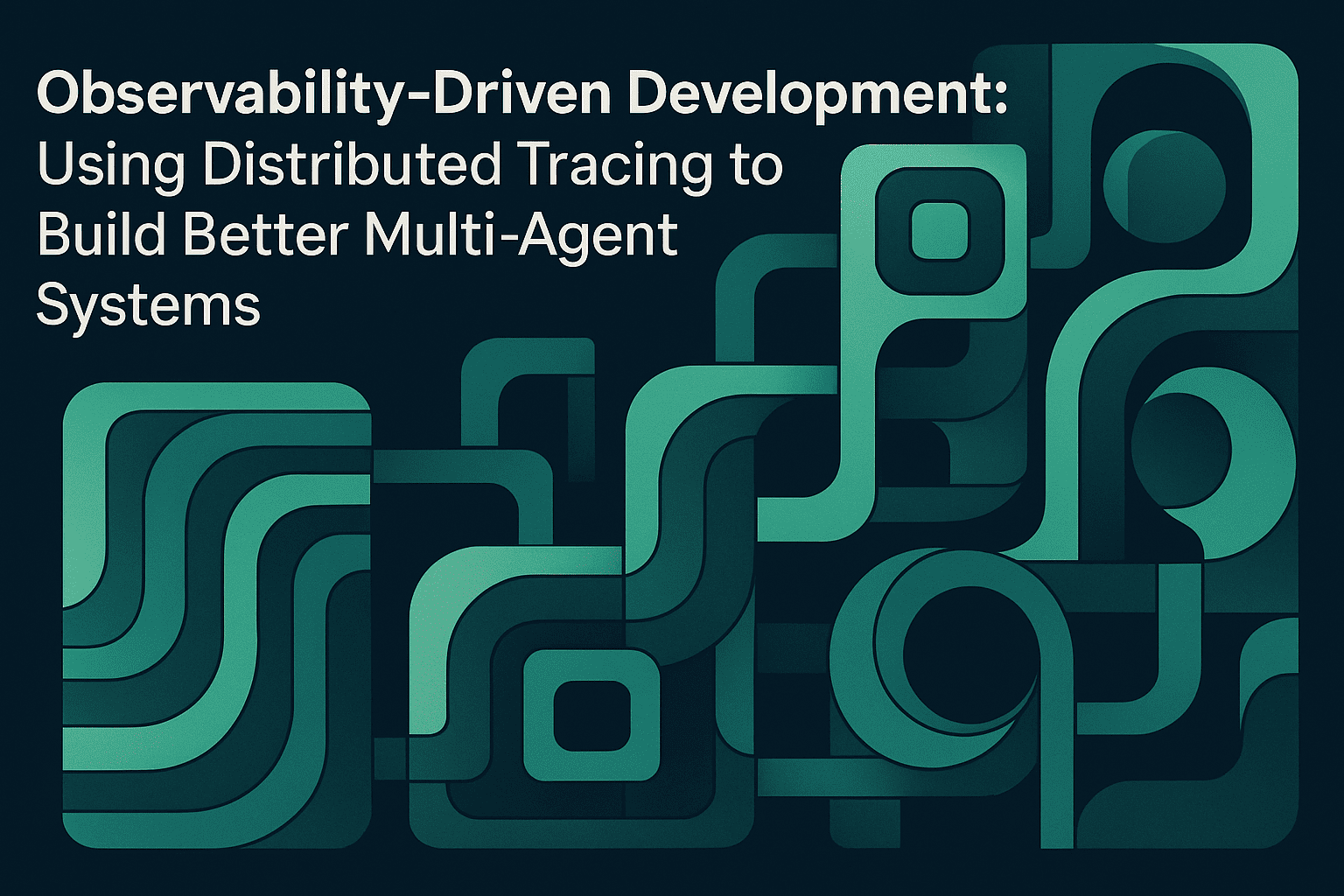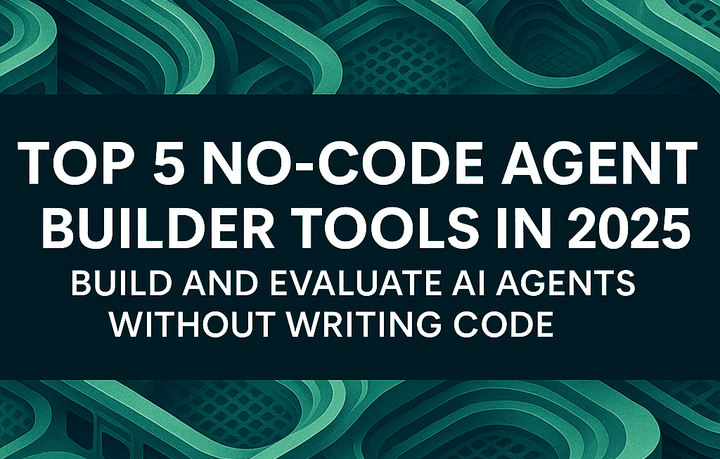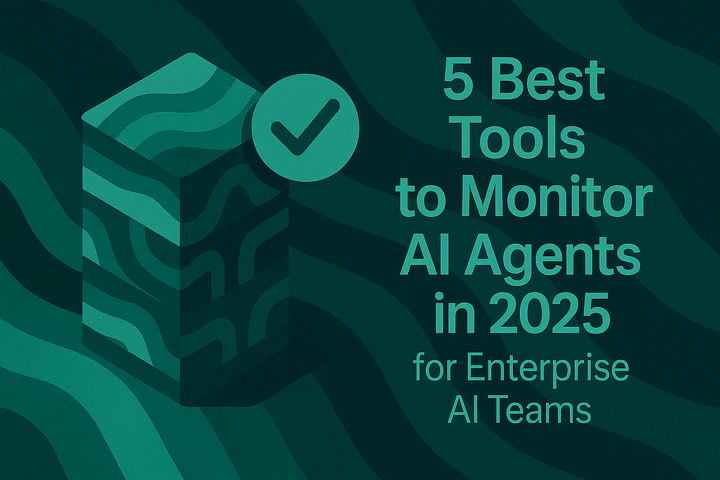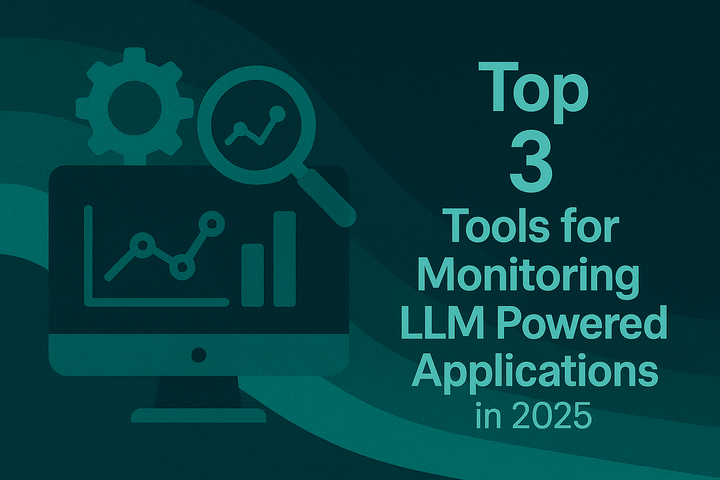Observability-Driven Development: Using Distributed Tracing to Build Better Multi-Agent Systems

TL;DR
Distributed tracing gives end-to-end visibility across multi-agent and microservice workflows, making it practical to debug complex LLM applications, measure quality, and ship with confidence. By adopting observability-driven development with Maxim AI—spanning experimentation, simulation, evaluation, and real-time tracing teams can correlate prompts and tool calls, analyze agent trajectories, catch regressions, and automate alerts and quality checks in production. The result is faster root-cause analysis, lower incident impact, and sustained reliability for agentic systems.
Introduction
Multi-agent systems are powerful precisely because they’re complex: a single user request can fan out into planning, tool selection, retrieval, orchestration across microservices, and iterative reasoning. Traditional monitoring—limited to service-level metrics and isolated logs cannot explain “why” across the full chain of decisions and dependencies.
Observability-driven development treats visibility as a core part of the design. Instead of hoping to infer behavior from metrics, you instrument the workflow so each step- prompt, model generation, retrieval, tool call, and downstream API—emits structured telemetry that can be followed, queried, and evaluated end-to-end. Distributed tracing is the backbone of this approach: it links spans across services and agents into a single coherent trace, allowing you to reconstruct the exact path a request took and how each decision affected outcomes.
What is distributed tracing?
Distributed tracing is a method to capture the full lifecycle of a request as it traverses services, components, and agent steps. Each segment of work is recorded as a span with metadata (timing, tags, events, errors), and spans aggregate into a trace that represents the end-to-end journey. In LLM and multi-agent systems, spans typically include, model generation, context retrieval, tool invocations, and downstream service interactions. This creates visibility into performance bottlenecks, dependency chains, and quality-impacting behaviors. Traditional single-process tracing only inspects local execution, whereas distributed tracing captures cross-service propagation so engineers can follow the exact path and correlate cause with effect.
Why traditional monitoring fails for LLM applications
Conventional monitoring was built for structured services, not reasoning-led workflows. It misses critical context and quality signals that matter for agents.
- Cannot track the correlation of inputs to completion: Without trace-level linkage, teams can’t tie specific inputs to outputs or downstream effects. Tracing Overview.
- Lacks LLM-specific metrics: Token usage, parameters, latency vs. cost tradeoffs, and quality scores are not captured natively. Dashboard.
- Struggles with mixed data types: Combining structured telemetry with unstructured prompts, documents, and transcripts requires unified trace semantics. Attachments.
- Cannot trace reasoning chains: Tool calling, multi-step plans, and agent trajectories are opaque without span-level instrumentation. Tool Calls. Agent Trajectory Evaluator.
- Fails at complex workflows: RAG, orchestration across services, and retries need trace context to debug and optimize. Sessions.
- Minimal human feedback integration: Traditional tools don’t collect or evaluate subjective signals at trace/span level. Human Annotation.
- No support for subjective metrics: Ratings, A/B testing, or qualitative assessments must be integrated with evaluators and logs. User Feedback. Online Evals Overview.
How distributed tracing works with Maxim
Maxim provides an end-to-end observability suite with distributed tracing across traces, spans, generations, retrievals, tool calls, tags, and events, aligned with AI application semantics. Engineers ingest logs via SDKs, visualize traces in dashboards, and configure alerts and auto-evaluations on production data.
- Tracing setup and concepts: Instrument traces and spans with SDKs; capture generations, retrievals, and tool calls inline. Tracing Quickstart. Traces.
- Production dashboards and reporting: Explore traces, filter by tags, and analyze performance and quality trends. Dashboard. Reporting.
- Alerts and notifications: Configure rules to detect errors, latency spikes, or quality regressions with real-time alerts. Set Up Alerts.
- Online evaluations on logs: Run automated evaluations on production traces to ensure ongoing quality baselines. Auto Evaluation on Logs.
- OpenTelemetry interoperability: Forward traces to or ingest from OTLP-compatible backends when needed. OTLP Ingest.
- Full product coverage: Observability integrates with experimentation, simulation, and evaluation workflows for lifecycle consistency. Agent Observability. Experimentation. Agent Simulation & Evaluation.
Benefits of distributed tracing
Observability-driven development with tracing impacts speed, reliability, and governance.
- CI/CD automation and safety: Integrate offline evals and regression gates so new prompt versions or agent changes ship only when metrics improve. Offline Evals Overview. CI/CD Integration (Prompts).
- Faster debugging and lower MTTR: Trace-level visibility reduces time-to-detect and enables precise fixes at the right span or step. Errors.
- Controlled rollbacks: Version prompts and workflows, compare performance across versions, and revert when regressions appear. Prompt Versions.
- Performance and quality optimization: Use evaluator scores and dashboards to tune latency, cost, and task success; analyze trajectories for better tool selection. Evaluator Store. Tool Selection.
- Compliance and governance: Centralized logging, reporting, and human-in-the-loop review support auditability and policy adherence. Reporting. Human Annotation.
Best practices for evaluation and observability
Treat evaluation and tracing as a single operating system for agent quality.
- Define business goals and success criteria: Tie metrics to outcomes like task success, clarity, faithfulness, and context relevance. Task Success. Faithfulness.
- Track objective and subjective metrics: Combine statistical evaluators (F1, ROUGE, precision/recall) with AI-as-a-judge and human review. Statistical Evaluators. AI Evaluators.
- Compare across versions and configurations: Use prompt management, prompt sessions, and evaluation runs to quantify improvements and regressions. Prompt Management. Prompt Sessions.
- Automate evaluation: Run offline suites pre-release and online auto-evals on logs post-release; add alerts for drift and anomalies. Online Evals Overview. Auto Evaluation on Logs.
- Log richly for debugging: Capture tool calls, retrieval contexts, attachments, and user feedback per span; add tags and events for filtering. Tool Calls. Tags.
- Keep humans in the loop: Use human annotation for edge cases and nuanced quality checks, especially for voice agents and RAG. Human Annotation.
- Document and version: Maintain prompt versions, partials, and deployment records; use sessions and folders for organization. Prompt Partials. Folders & Tags.
- Iterate continuously: Feed production logs into datasets; curate, evaluate, and improve agents across cycles. Manage Datasets. Curate Datasets.
Building a full-stack observability workflow with Maxim
A cohesive workflow spans experimentation, simulation, evaluation, and observability.
- Experimentation and prompt engineering: Iterate prompts, compare models, and deploy versions with controlled variables, measuring latency, cost, and quality. Experimentation.
- Simulation for scenario coverage: Reproduce customer interactions, analyze trajectories, and re-run simulations from any step to isolate issues. Text Simulation Overview. Simulation Runs.
- Unified evaluations: Mix pre-built, custom, statistical, and AI evaluators; visualize performance across test suites and versions. Pre‑built Evaluators. Custom Evaluators.
- Production observability and alerts: Trace live traffic, trigger auto-evals, and alert on issues to lower incident impact. Set Up Alerts. Exports.
Conclusion
Observability-driven development, anchored by distributed tracing, is the most practical way to build reliable multi-agent systems. It connects prompts, tool calls, retrievals, and downstream services in one coherent picture so teams can debug quickly, measure quality systematically, and ship confidently. With Maxim AI’s integrated stack—experimentation, simulation, evaluation, and observability—you gain actionable visibility before and after release, automate quality checks, and maintain high performance as agents evolve. Start with tracing quickstart, add evaluator baselines, and wire alerts to protect production.
- Explore Observability: Agent Observability.
- Get hands-on with Tracing: Tracing Quickstart.
- Evaluate Agent Quality: Agent Simulation & Evaluation.
Ready to see it in action? Request a demo or Sign up.


